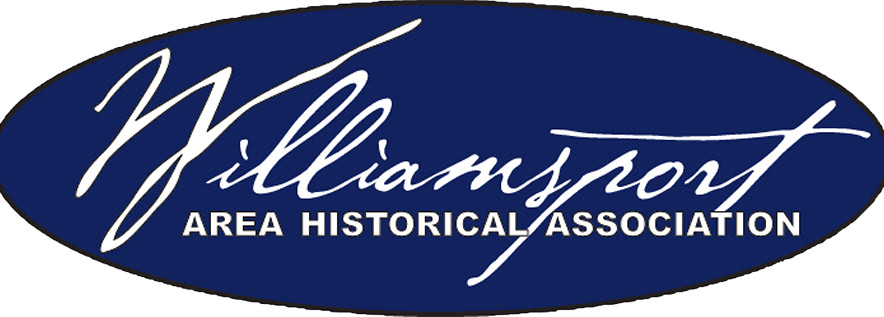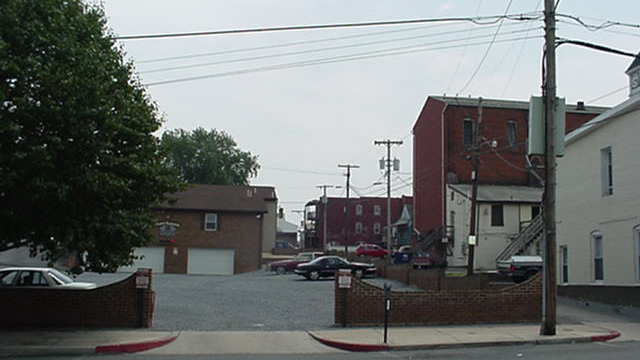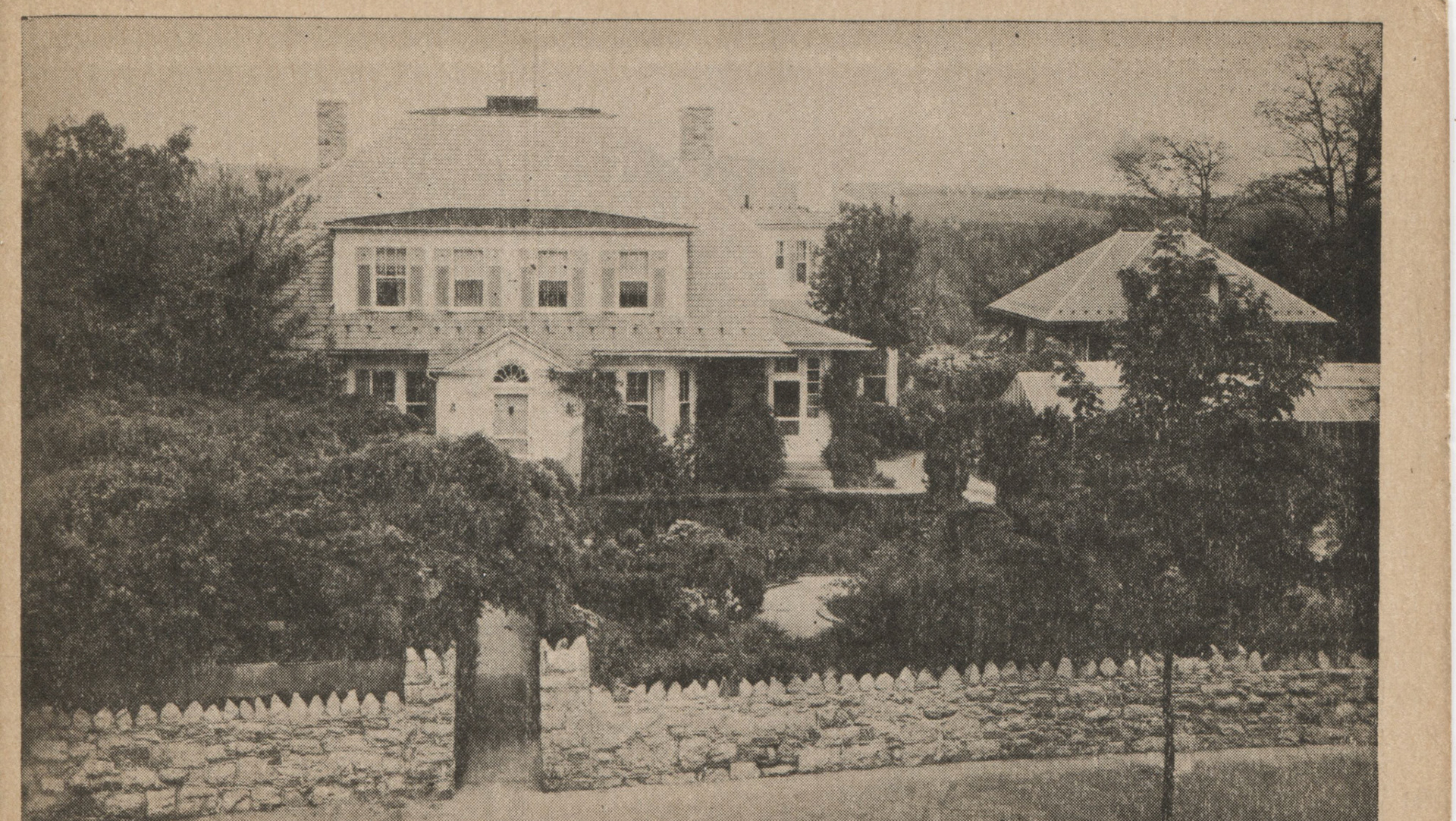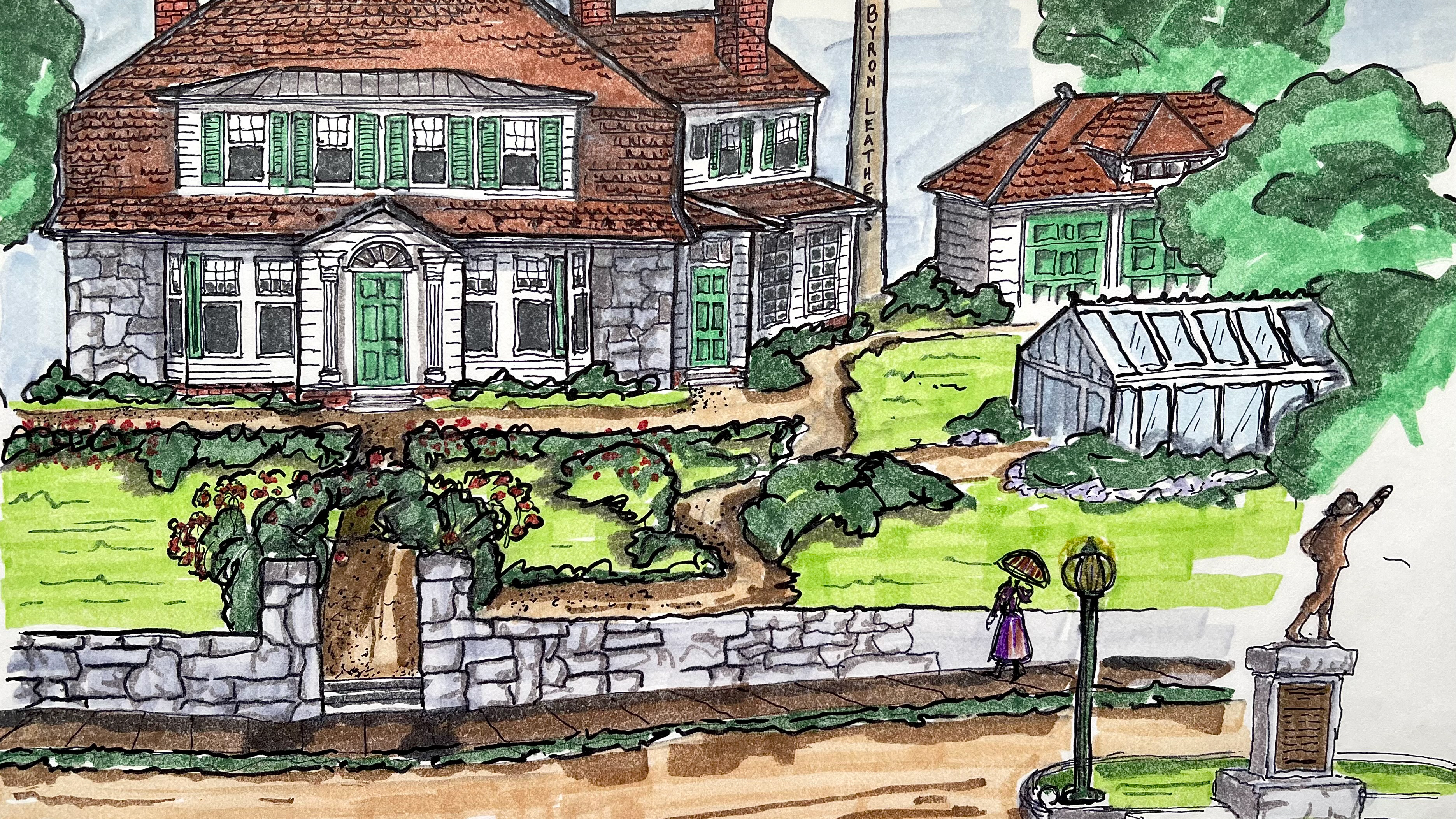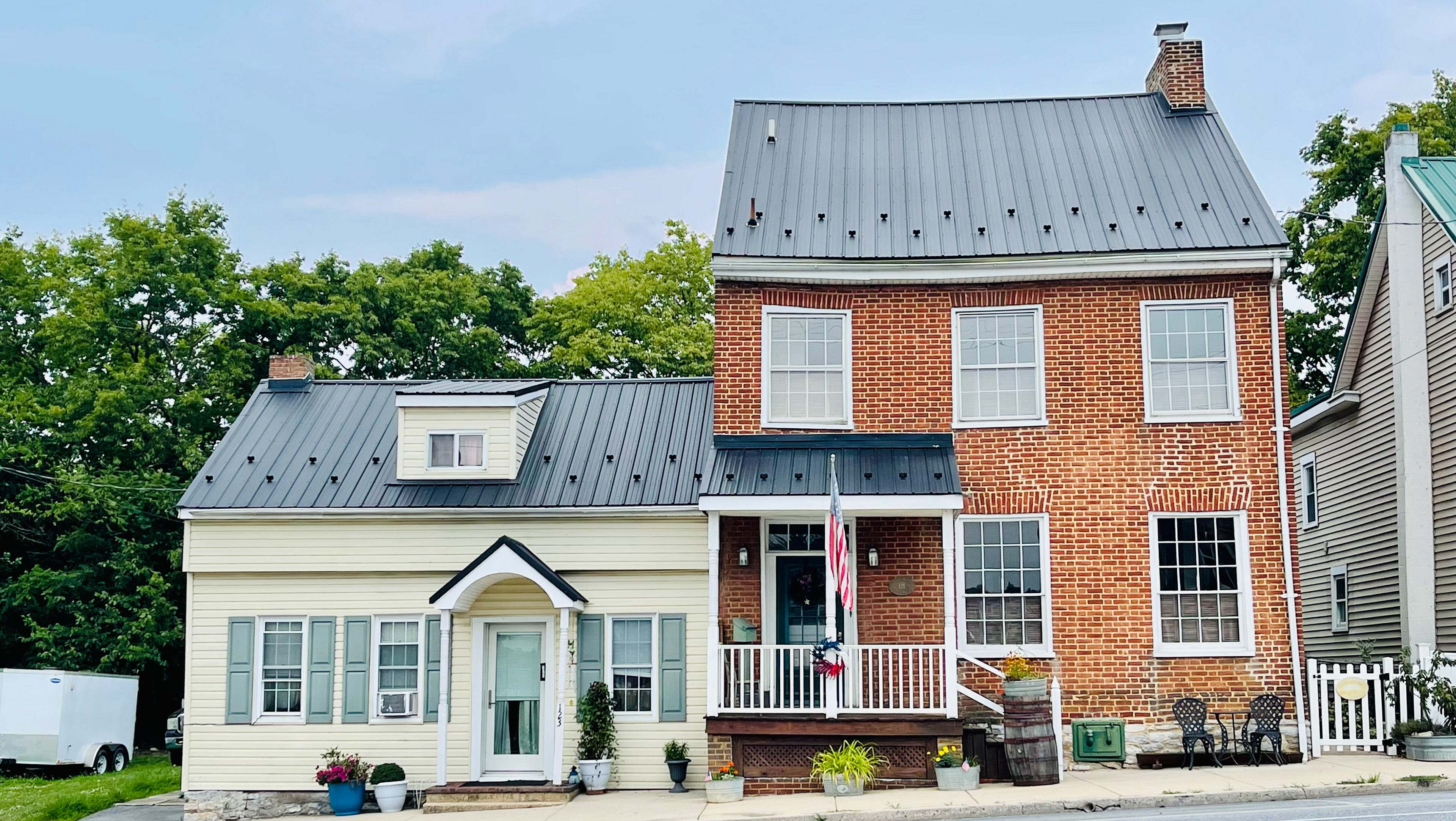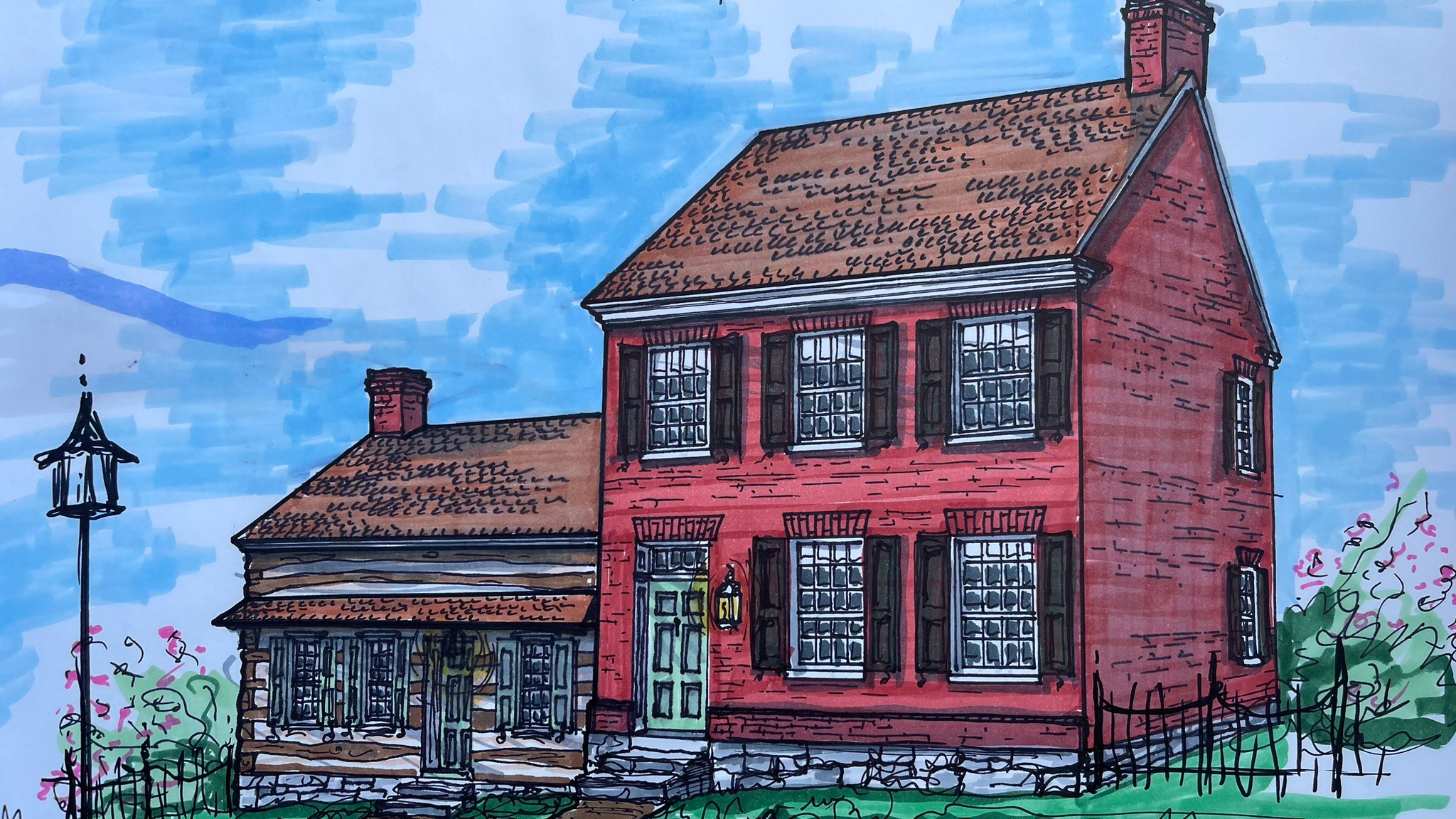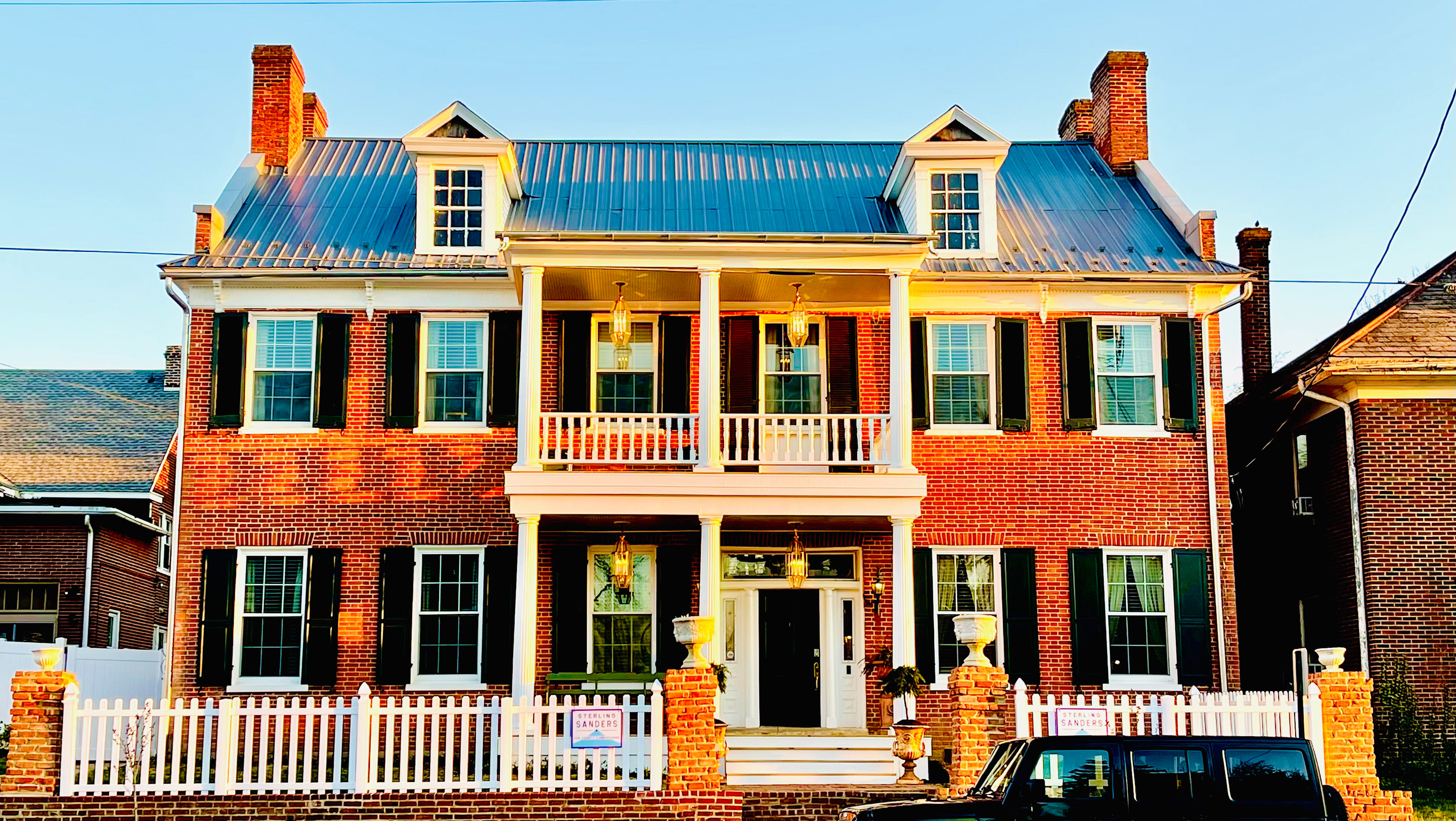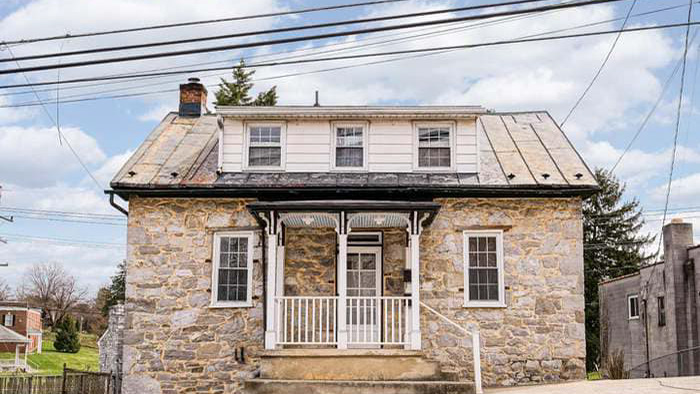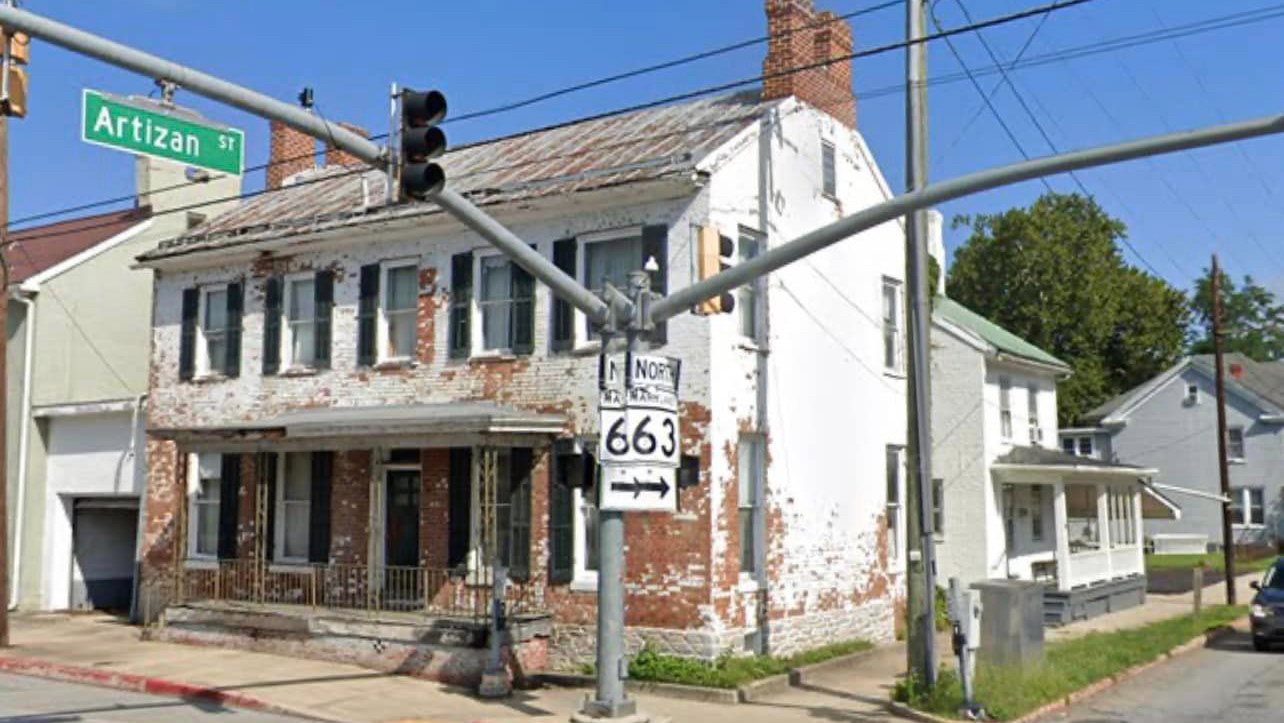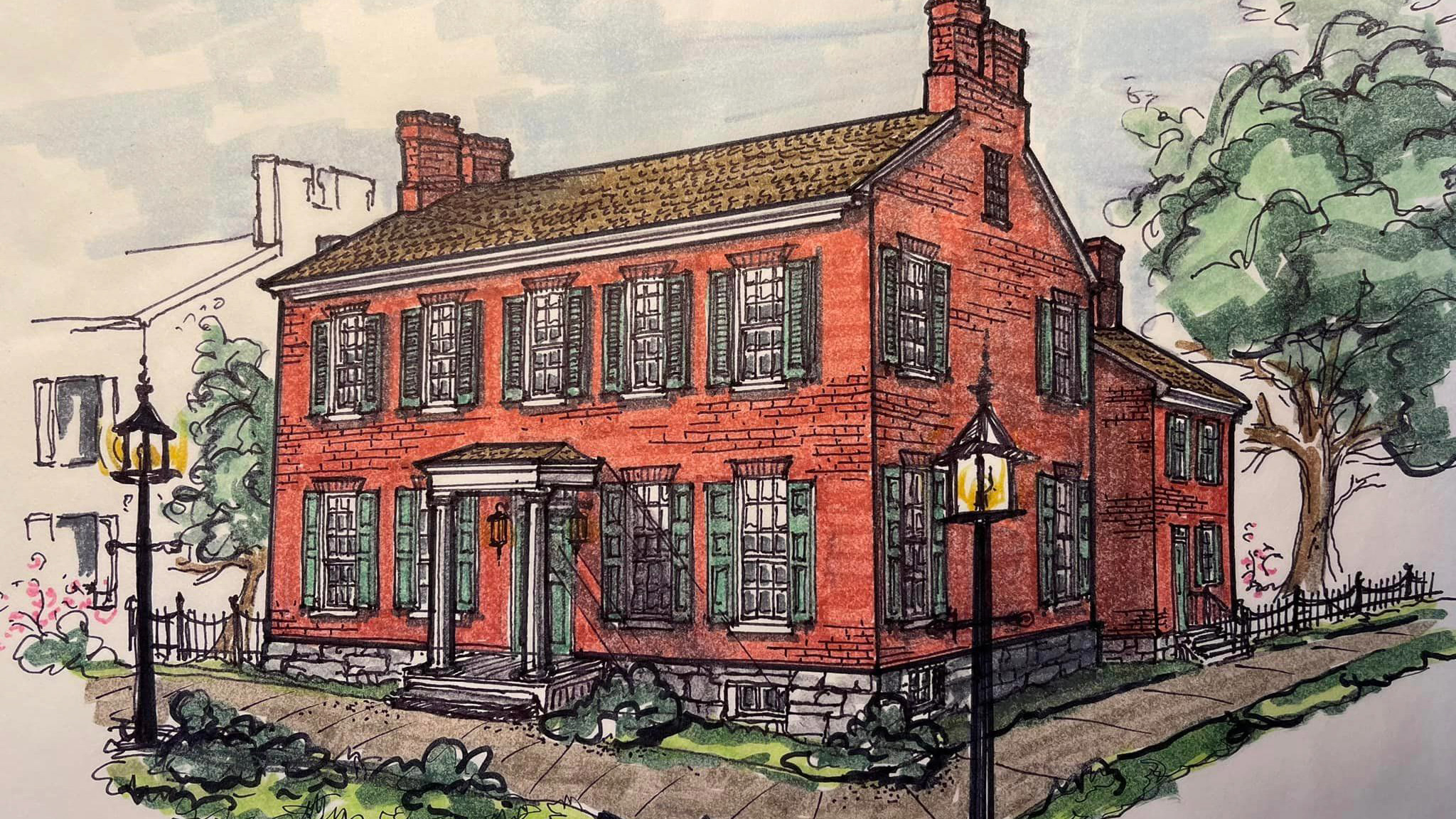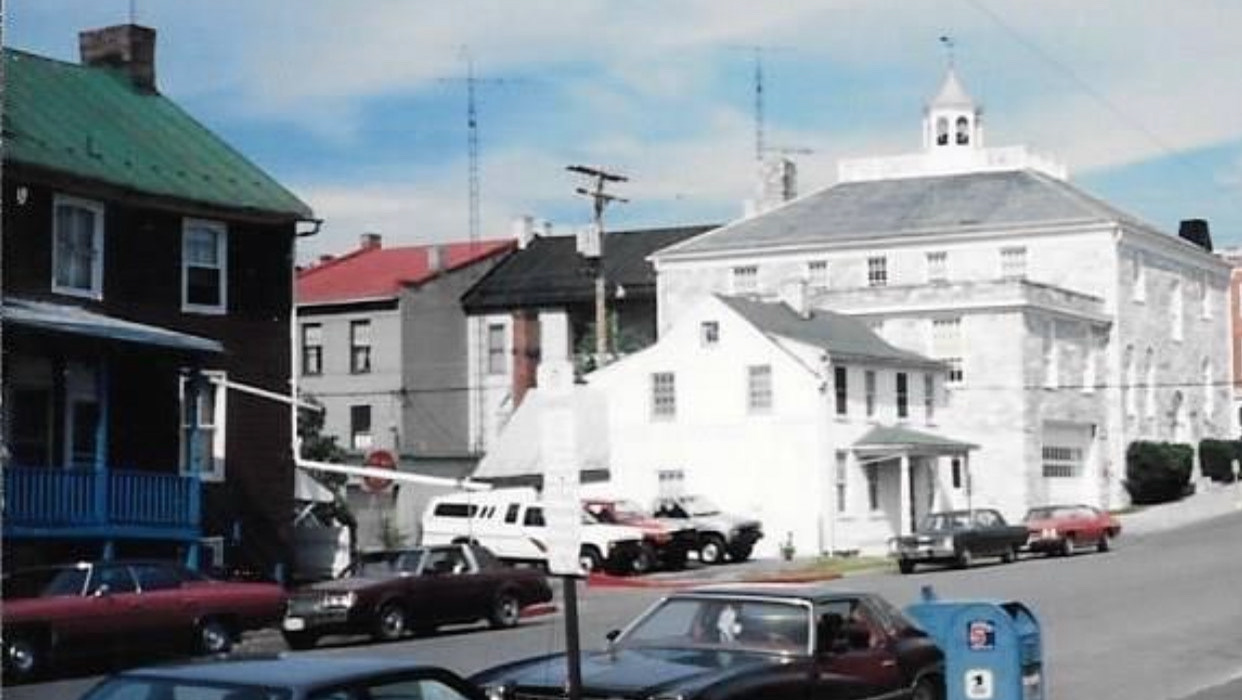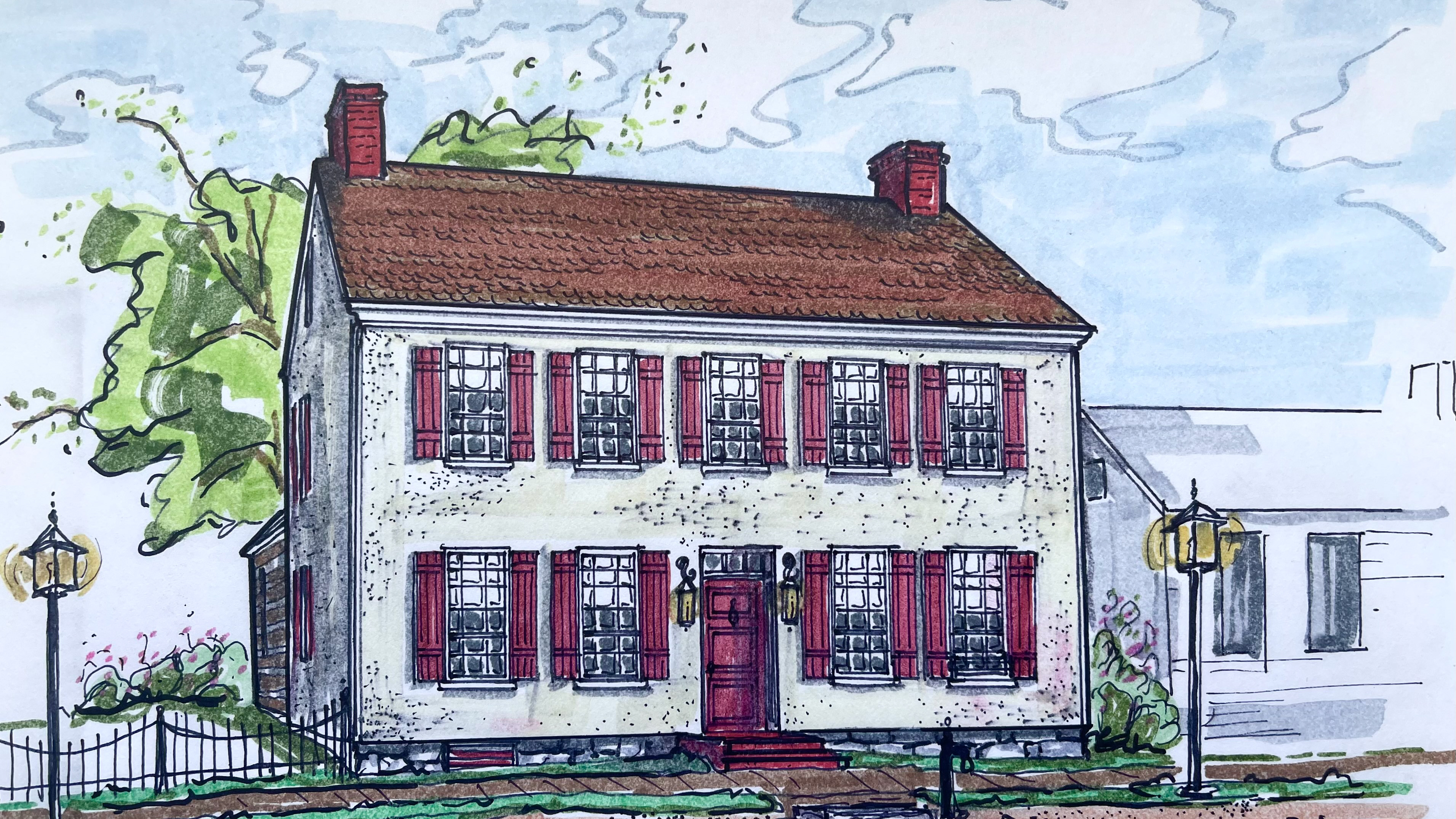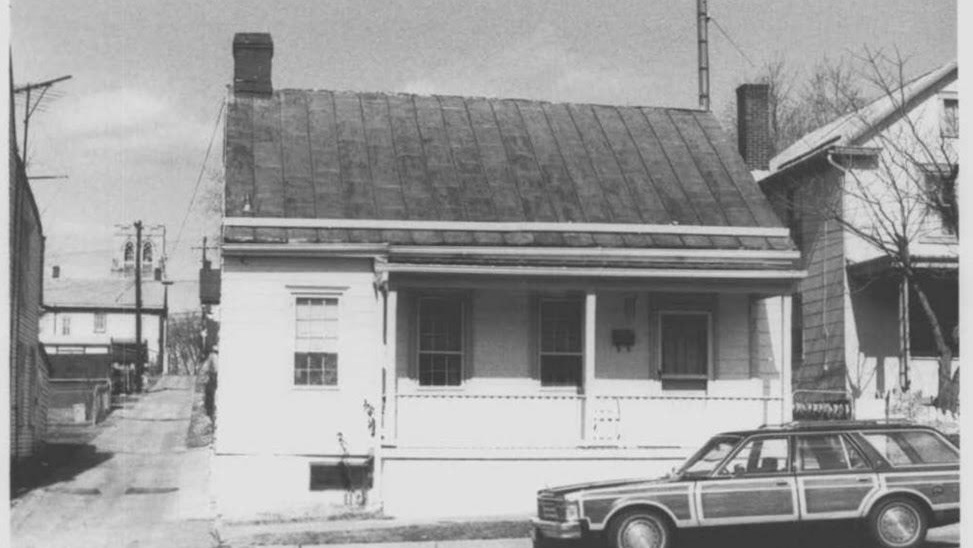Proudly sitting on original lot 194 in Williamsport on the north side of East Potomac is a large Georgian-Style brick house with a molded water table. This house is one of Williamsport's earliest remaining homes, and one of the most stylish. This fine house employs double chimneys in the west wall with an unusual step design, a broad cornice spans the eaves, and heavy jack arches crown the windows and doors. This three-bay, two and 1/2 stories tall house sits high above the street on a raised limestone foundation. The front lower windows were elongated during the Victorian Era, and a 20th-century wooden door covered the original transom. Other than these changes, the home remains largely intact. The interior sports its stunning details, including the original 18th-century staircase, five fireplaces with original, hand-carved mantles, chair rails, and built-in cupboards, to name a few. Directly west, only a few feet from the house, is a low, one-story stone house sitting partially below the sidewalk built in the Germanic taste.
Abraham Cretzner leased lot 194 from Otho Holland Williams in 1787, the first year lots were let. This lot had a small stream running directly through the property, allowing for a commercial venture as there was immediate access to a significant water supply and the ability to harness water power. Springfield Run that still flows through Byron Park now runs under Potomac Street, but in the late 18th century, it would have flowed under a bridge across Potomac and through the basement of the brick house creating an early refrigeration system in the basement and a constant water supply.
The stone arches with radiating voussoirs on each side of the foundation where the stream ran through the cellar are still there today. Abraham no doubt chose the lot for this reason and its location on the old wagon road leading to Watkins Ferry. Cretzner immediately fulfilled his lease obligations, built the one-and-one-half-story stone building, and opened it as a tannery.
Cretzner ran his tannery for four years before selling the lease to Henry Startzman (1746-1811) and his son-in-law Daniel Weisel Sr. (1765-1825) in 1791 for 175 pounds, a sum proving significant improvements. Undeveloped lots in Williamsport we're leasing for 5 pounds. Startzman's daughter Margaret (1773-1817) had married Daniel the year before, and her father was eager to help the young couple set up a life. With Henry's assistance, Daniel and Margaret began constructing the large brick home between 1791 and 1803. Henry Startzman was a wealthy landowner whose family had been in Washington County since the 1740s. More about Henry can be learned in a former post from July 27th.
The 1803 tax assessment of Williamsport had Daniel Weisel listed as a tanner, owning a house, lot, and tan yard proving the brick house was completed by then. Henry sold Daniel and Margaret his half ownership in the property that same year for the modest sum of 87 pounds, no doubt an act of love and affection for his daughter, son-in-law, and grandchildren.
In the years following, Daniel would become an extremely respected figure in Williamsport and a prosperous merchant and landowner. He was instrumental in building the massive market house (1815) across the street from his home, where the Sheetz now is. More about the important and prominent Weisel Family can be found in a former post from July 13.
After Margaret passed in 1817 and Daniel Sr. in 1825, their children inherited the homestead. In 1841 after the death of several Weisel children, the estate put the home up for sale in an advertisement detailing the brick house, stone tannery with marble table and stables, etc. Daniel Weisel Jr. (1803-1880), a judge and lawyer, and his wife Matilda Davis (niece of Otho Holland Williams) wanted his parents' house and purchased the home where they resided until he died in 1880. The property left the Weisel Family in 1882 after ninety-one years when Victor Cushwa purchased it.
Mr. Cushwa (1833-1912) was born in Clearspring at the Family Homestead near Dry Run in 1833. The Cushwa Family came to Pennsylvania in the late 1600s and settled near Clearspring about 1750. Victor learned the trade of tanning from his Uncle George Cushwa. He ran the Washington County Leather Manufacturing Company until 1872, when it was destroyed by fire. He purchased half interest in Chas. Embry & Sons of Williamsport, which dealt in coal, cement, and plaster, and changed the firm name to Embry & Cushwa. In 1880 Mr. Cushwa bought his partner out and improved the business by building warehouses at Hagerstown and Williamsport.
In 1888 he partnered with his sons forming Victor Cushwa and Sons. They expanded the business again in 1896, beginning the Conococheague Brick and Earthenware Company making the famous Cushwa brick. Mr. Cushwa served as County Commissioner from 1907-1911. He was also instrumental in building the bridge over the Potomac River connecting Maryland and West Virginia at Williamsport. The bridge is named after him. Mr. and Mrs. Cushwa lived in the home for many years, from 1882 to roughly 1904, when his first wife Mary Ann passed. He married Catherine Moore in 1904, and they moved to Rose Cottage on Artizan street for the renaming eight years of his life. Victor's children and grandchildren continued in his footsteps, creating a Maryland political and industrial dynasty spanning the entire 20th century. Victor Cushwa IV (1924-1991) was a State Senator for 13 years. The pedestrian bridge over I-68 at Sideling Hill was named in his honor. Both great-grandfathers and great-grandson of the same name have bridges named for them.
The home changed hands a few times over the next 70 or so years, including ownership by Catherine "Katie" Ardinger Ripple from 1921 until she died in 1951.
Steven "Ed" and Susan Shaw were newlyweds in 1984. Susan grew up locally and had always admired "The Old Weisel Property" and considered it her dream house. When they saw it was available, they knew they wanted to make it their home and bought it. After closing, they had the great fortune to hold their wedding reception in their beautiful new home. Ed and Susan love their historic home and have enjoyed living in it for the last forty years. Ed and Susan have meticulously cared for it. They had years of old paint professionally cleaned off the exterior old brick, they had sidewalks redone, built a 4-season glass sunroom, and Ed has personally repaired the lime mortar throughout the basement. He also designed and built a charming media room under the old kitchen. They enjoy the history of their house and care deeply about its preservation and architecture. The fine old manse has been lucky to have caring and attentive stewards in Ed and Susan, the Cushwas, and Weisels to name a few.
Because of their love for this home, the nearly 230-year-old home will continue to grace Williamsport's historic streets. Williamsport's history and heritage in brick, stone, and wood are important to our past and future and should be protected.
